Understanding Dog Theft
In a world where our dogs are not just pets but cherished family members, the alarming rise in dog theft has become a growing cause for concern among dog owners and caregivers. The thought of them being stolen is our worst nightmare. The heightened demand for dogs during the pandemic created an opportunity for criminals, as dog breeders struggled to meet the rising demand.
These criminals have been targeting various locations, including boarding kennels, homes, gardens, dog walkers, and even unsuspecting owners during their walks with their dogs. In this article, we will look into some essential steps you can take to protect your dog or the dogs you look after from the threat of theft.
The Pet Abduction Bill
The proposed Pet Abduction Bill will have a second reading in the House of Commons on 19th January. It still has some way to go after then before it becomes law. If it is passed in due course as currently drafted, it will make it an offence to take a dog (or cat) or to detain a dog, from the lawful control of any person.
The offence will only apply in England & Northern Ireland and on conviction could lead to up to 5 years prison.
What are the common tactics used by dog thieves?
Dog thieves often employ a variety of tactics to steal dogs. These tactics can vary, but they all aim to separate a dog from its owner or guardian. Here are some common tactics used by dog thieves:
- Dognapping from unattended locations: Thieves may take advantage of dogs left alone in gardens, parks, or tied up outside shops. They strike when the owner is out of sight, making it easier to grab the dog and make a quick escape.
- Deceptive scenarios: Some thieves will approach dog owners with an innocent request, like asking for directions or pretending to admire the dog. While talking to the owner, they may attempt to grab the dog and run.
- Breaking and entering: In targeted thefts, thieves may break into homes or vehicles to steal dogs. They might be aware of specific breeds or valuable dogs inside the premises.
- Fake ads and “found” dog scams: Some criminals post fake ads claiming to have found a lost dog or a pet for sale. Unsuspecting buyers might end up purchasing a stolen dog.
- Dognapping during walks: Thieves may target dog walkers or owners during walks. They could attempt to snatch the dog’s lead or collar, or physically remove the dog from its owner’s grasp.
- Dog theft rings: In more organised thefts, criminal networks specialising in pet theft may operate across regions. They could steal dogs for resale, breeding, or even illegal dogfighting.
- Surveying social media: Thieves often look at social media posts of dog owners, identifying potential targets. Sharing too much information about your dog’s location, habits, or breed can make you vulnerable to theft.
- Luring with food: Some thieves use food or treats to lure dogs away from their owners, especially in public parks.
To protect your dog, it’s important to remain vigilant, not leave your dog unattended in public areas, and be careful when engaging with strangers. Additionally, microchipping and proper identification can help in the recovery of your dog if it is stolen, and spreading awareness about dog theft in your community can also help stop potential thieves.
Which dog breeds are more likely to be stolen?
While dog theft can target any breed, certain dog breeds are more likely to be stolen due to their popularity, value, or demand. Breeds that are commonly targeted for theft include:
- French Bulldogs: These dogs are a popular choice for thieves due to their high market value.
- English Bulldogs: Like French Bulldogs, English Bulldogs are valuable and can command a high price
- Pomeranians: Their small size and fluffy appearance make them attractive to thieves.
- Labrador Retrievers: Labs are one of the most popular dog breeds in many countries, making them valuable targets for theft.
- Chihuahuas: Their small size and portability make them vulnerable and easy to take.
- Yorkshire Terriers: These tiny, long-haired dogs are often sought after by thieves.
- Cocker Spaniels: This friendly, popular breed is often stolen.
It’s important to note that any dog can be stolen, regardless of breed, and the motivation behind dog theft can vary widely.
How can microchipping prevent dog theft?
Microchipping is a valuable tool in preventing dog theft and helping in the recovery of stolen dogs. Here’s how microchipping helps:
- Proof of ownership: A microchip provides proof of ownership. When a stolen dog is found or recovered, scanning the microchip reveals the owner’s contact information, helping to establish who has legal ownership and return the dog to its rightful owner.
- Identification: In the event of theft, thieves may remove collars or tags to conceal a dog’s identity. A microchip is a permanent form of identification that cannot be easily removed or changed.
- Deters resale: Thieves may steal dogs to resell them. Knowing that a dog is microchipped can deter potential buyers who want to buy dogs to breed, as they may be worried about purchasing a stolen dog with a traceable microchip.
- Checks: Vets and dog rescues routinely scan lost or found dogs for microchips. If a stolen dog is brought to a shelter or recovered, the microchip can quickly reunite the dog with its owner.
- Cross-checking ownership: In some cases, when authorities become suspicious of a dog’s ownership, they may cross-check the microchip information with reported thefts or missing dog reports, helping identify stolen dogs.
- Permanent record: Microchips store a unique identification number linked to the owner’s contact details in a secure database. Even if records are lost, the information remains accessible for the life of the dog.
- Legal action: If a thief is caught, the presence of a microchip can be used as evidence in a court of law to prosecute the thief for theft or possession of stolen property.
To maximise the effectiveness of microchipping in preventing dog theft, it’s important to make sure your contact information is up-to-date in the microchip database. Regularly check with the microchip provider to verify that your details are accurate.
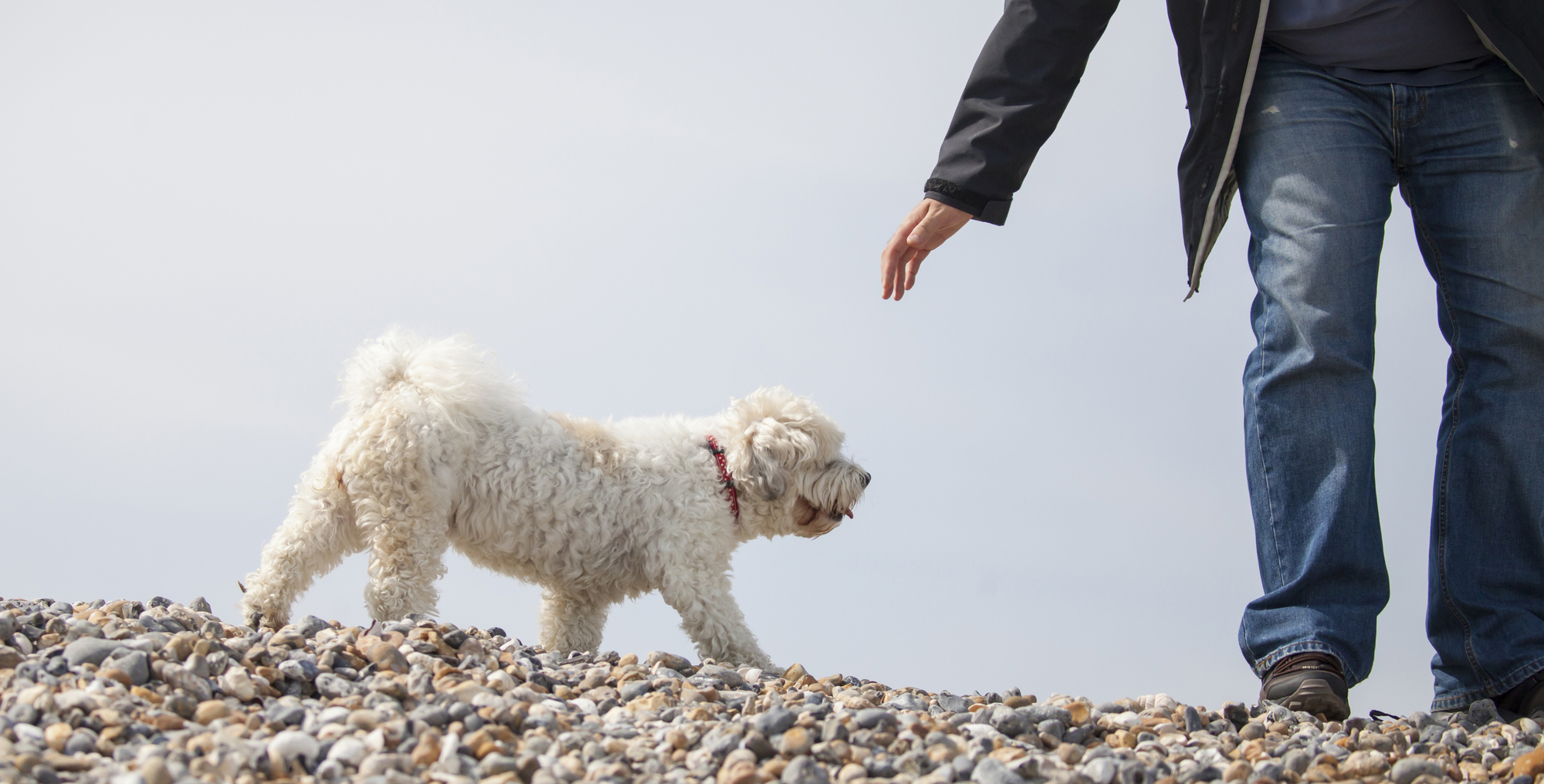
What are the signs that indicate your dog is likely to be stolen?
We don’t want you to not enjoy your walks with your dog but recognising potential signs that your dog may be at risk of theft can help you take precautions and protect your pooch.
- Strangers showing unusual interest: Be cautious of individuals who seem overly interested in your dog’s breed, age, or value. They may be assessing if your dog is worth stealing.
- Repeated approaches: If the same person approaches you multiple times, asking questions about your dog, it could be a red flag.
- Unauthorised surveillance: Suspicious individuals may take photos or videos of your dog without your permission. This could be to share information with potential thieves.
- Strange vehicles: Keep an eye out for unfamiliar vehicles in your area, especially if they seem to be observing your daily routines.
- Attempts to lure your dog: Be cautious if someone tries to lure your dog away from you with treats, toys, or food when you’re in a public place.
- Questions about your routine: If someone asks about your daily walking or exercise routine with your dog, they might be trying to figure out the best time to steal them.
- Unsolicited offers to buy: Be cautious of unsolicited offers from strangers who ask you if you want to sell your dog.
- Dog theft reports: Stay informed about local dog theft incidents or reports in your area, as an increase in such cases could signal higher risk.
While these signs should raise awareness, it’s important not to jump to conclusions. Many people genuinely love dogs and may approach them out of friendliness or curiosity. However, if you notice multiple red flag signs or feel uncomfortable in a situation, trust your gut instincts and take steps to protect your dog’s safety.
Preventive Measures for Dog Professionals
We spoke to Bed and Bone Boarding, a five-star rated, licensed dog boarding and daycare business based in Hastings, East Sussex. Here’s the expert security advice, tools and tips they recommend.
Security is a huge part of our service here at Bed and Bone. Our clients have complete peace of mind knowing that we do everything possible to keep their dogs safe and deter potential thieves.
Blink – Home Security Cameras
“These wireless cameras are versatile and can be used both indoors and outdoors. They are waterproof and offer two-way audio. Most importantly, they have built-in motion detectors. To enhance security, we have installed several of these cameras on our property.
This ensures that we receive instant alerts for any movement nearby. Even when we’re asleep, these security cameras help us stay vigilant, ensuring the safety of our client’s dogs and our home.”

Ring doorbell with outdoor light
“We use a Ring doorbell, that comes with an outdoor light is an effective deterrent and alert system rolled into one. This doorbell’s camera is designed to detect any motion at the front of your house, quickly sending notifications to your smartphone.
We’ve taken it a step further by pairing it with the Ring outdoor light camera, which enhances the security provided by this cost-effective product. Installation is easy, and it offers us peace of mind knowing our property is well-protected.”
Home alarm system
“A home alarm system is a worthy investment. You can choose a system that automatically alerts the police to a break-in or one that notifies you if somebody is on the premises.
Ring offers a security camera with lights and a siren alarm which you can fit yourself, and just like the doorbell, it will alert directly to your phone.”
Check your fences and gates
“For us at Bed and Bone, making sure the garden is escape-proof is a top priority. We regularly inspect our fences and gates to make sure they are secure and not damaged in any way. Be mindful in bad weather conditions too as damage may occur.
We also advise adding additional locks to your gates, a simple and cheap way to up the security of your property and always keep in mind that leaving your dog unattended in your garden, especially at night, is not advisable. One of the conditions of getting a council license is that all entrances and exits are double-gated. Not only does this keep dogs in but also keeps wanna-be intruders out!”
What precautions can a professional dog walker take to prevent theft?
“There’s more to being a professional dog walker than just having a stroll in the park. Professional dog walkers have to be vigilant at all times. Below are some excellent tips to keep the dogs you walk safe. Before we started our boarding business, we had a successful dog walking company in London with up to ten walkers at any one time, so we put these measures into place for extra security.”
Dog Lead With Safety Clip
“Introducing the Long Paws Comfort Lead with a screw lock feature. We got these leads from Balham Bark in South West London, and they have proven to be brilliant. What sets them apart is the locking karabiner used to attach them to your dog’s collar or harness. Choosing this type of attachment, rather than a quick-release collar, really helps to make your walk safer.
You can also loop a regular dog lead through the handle of the safety clip lead and fasten it to your belt loop. This makes it even more challenging for somebody to snatch the lead out of your hand because it’s attached to you!”
Tint your car windows
“If you are driving a car to transport dogs around then consider tinting your passenger windows in the darkest shade you can get! even if you don’t intend to leave dogs unattended, tinted windows offer an easy solution to limit the visibility into your car. Additionally, they provide the added advantage of reducing heat inside during hot summer days.”
CCTV window stickers
“Even if you don’t have a camera in your car, stickers on your windows can help to stop people from trying to look in or break into your car.
A long time ago, when we were walking our dogs close by, we saw two people looking at vehicles in the car park. They noticed our warning sticker and quickly left. There weren’t any dogs in our car then, but it was great to see that just a simple sticker made them think twice and stay away.”
Slam Locks
“Slam locks are really useful, especially for professional dog walkers. When you’re busy picking up or dropping off dogs, these locks help a lot. They automatically lock your van when you close the door, so you don’t have to worry about forgetting to lock it.”
Crate Locks
“Adding extra security to your dog crate in the car more secure by using a padlock or bike lock. This makes it harder for thieves to get in and get the dogs out. If you’re a dog walker working alone, sometimes you might have to leave your dog in the car for a short time. Locking the crate is a quick way to keep it safe while you step out for a moment
We use TRANSK9 dog cages these crates can be locked and are very strong and heavy. Perfect for the job!”
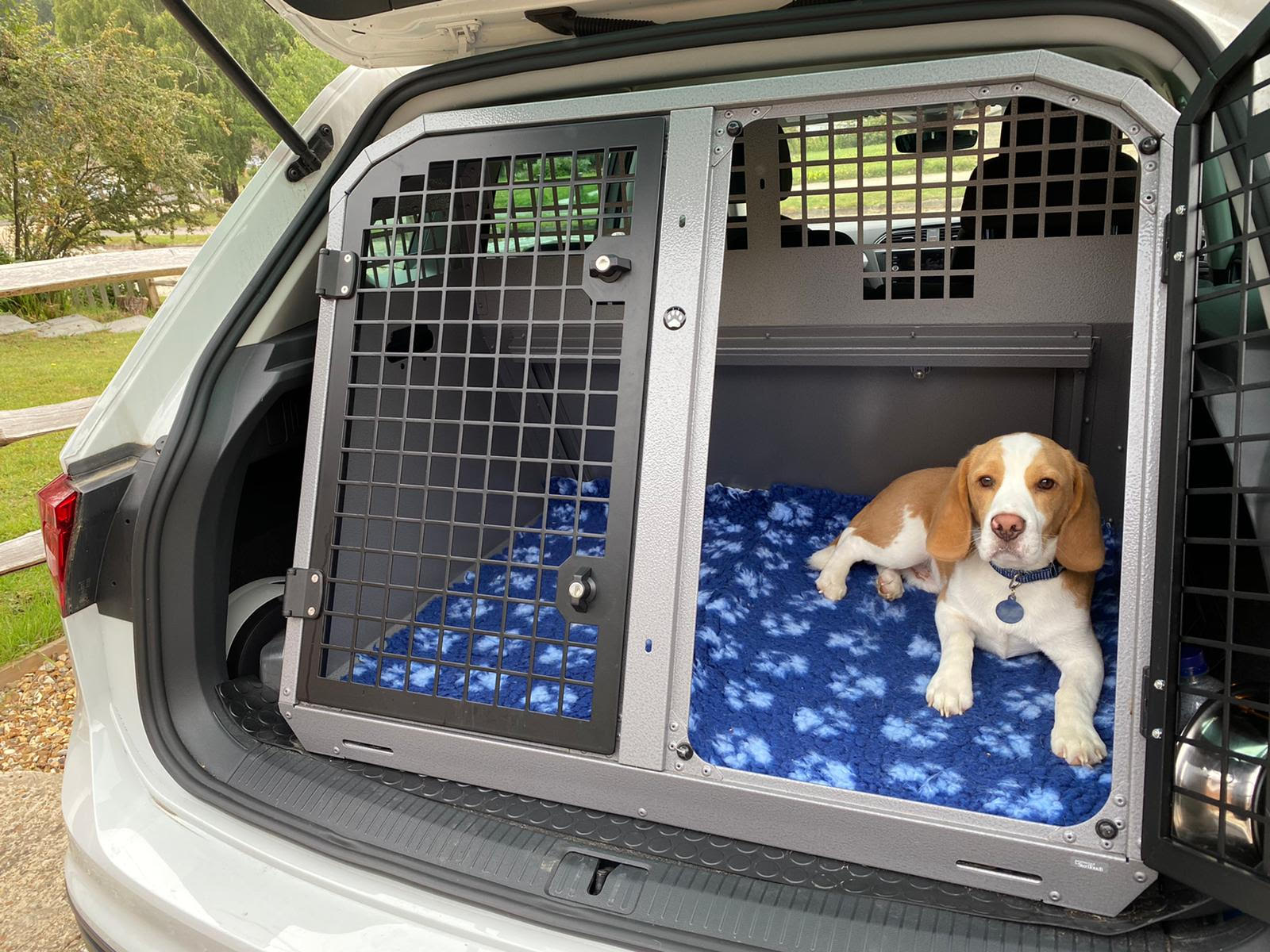
Don’t leave your keys in the ignition
“Don’t forget to take your car keys out of the ignition. Using retractable car keys is a good idea to make sure you never leave your keys in your car or van’s ignition. This is important because it stops people who might quickly try to steal your vehicle, especially when your dogs are inside.
Retractable keys are attached to you, so when you get out of the car, the keys come with you. This means even if you’re in a hurry or distracted, your keys won’t be left behind for someone to grab or drive off with the dogs. Keeping your keys with you all the time is a simple but effective way to protect your car and your dogs from being stolen, just for a couple of quid.”
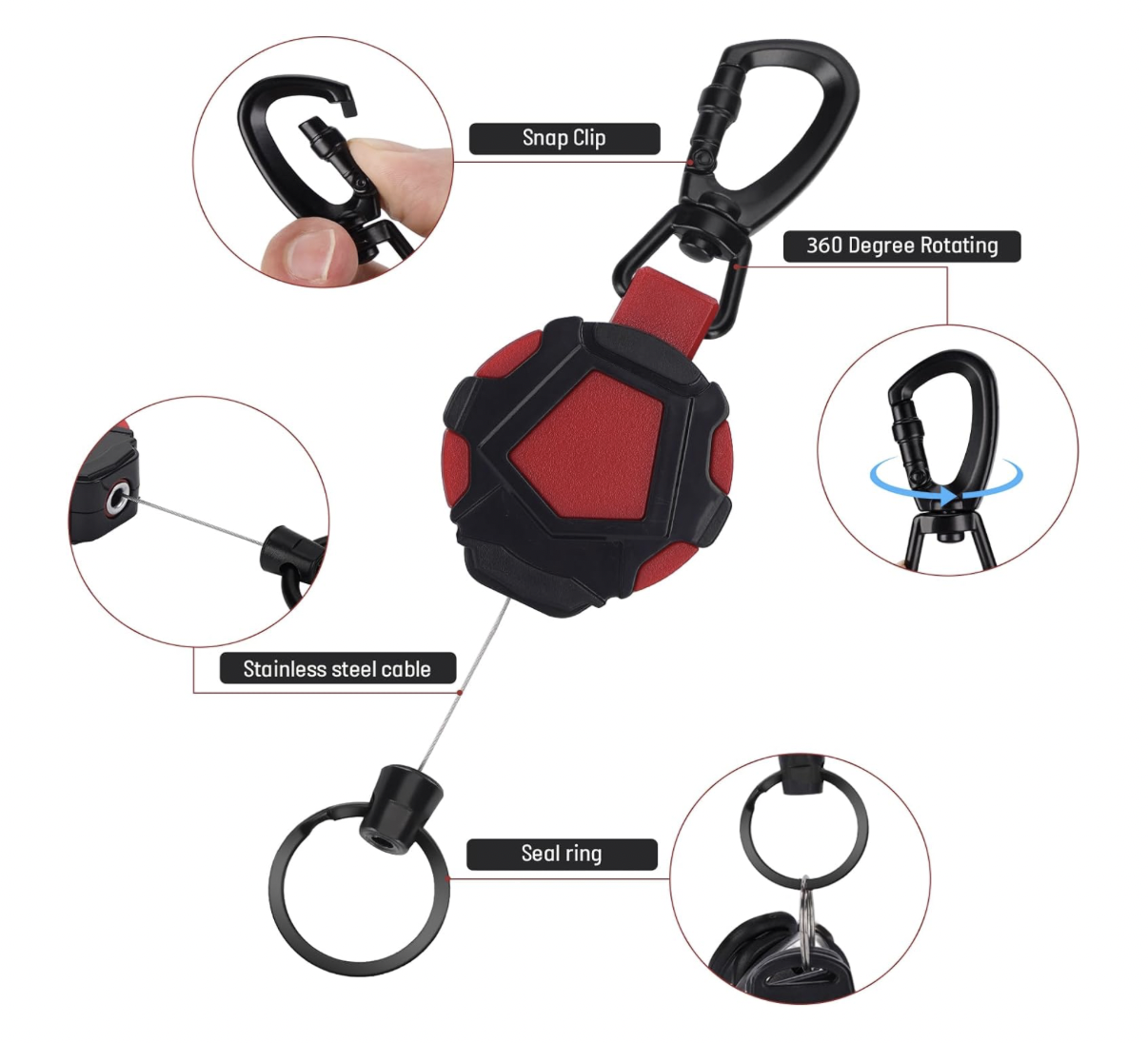
Are you looking for a professional dog walker?
Why is it important to have up-to-date pet insurance to prevent dog theft?
Having up-to-date pet insurance is crucial, not only for general health and accident coverage but also as a protective measure against dog theft. While pet insurance itself doesn’t prevent dog theft, it plays a significant role in the aftermath and in deterring theft in several ways:
- Financial Security in Theft Cases: Pet insurance that covers theft can provide financial compensation if the worst should happen and your dog is stolen. This can help cover the cost of a reward for the return of your pet.
- Proof of Ownership: Keeping your pet insurance up to date, along with microchipping and registration, serves as proof of ownership. This can be vital in reclaiming your dog if they are found after being stolen.
- Awareness and Deterrence: Insurers often provide information and resources about dog theft trends and preventive measures. Being informed can help you take steps to protect your pet, and visible signs of a dog being well-cared for and insured might deter potential thieves.
- Recovery Assistance: Some insurance policies offer services to help find a stolen pet, such as funding for advertising or offering a reward.
- Liability Coverage: If your dog is stolen and subsequently causes harm or damage, some pet insurance policies may offer liability coverage, protecting you from potential legal costs.
- Peace of Mind: Knowing that you have financial and support resources in place through insurance can provide peace of mind in the unfortunate event of pet theft.
In summary, while pet insurance doesn’t directly prevent dog theft, it offers a layer of financial protection and support, contributing to broader efforts to deter pet theft and help in recovery should it happen.
What do I do if my dog is lost or stolen?
Every dog guardian dreads the thought of their dog being lost or stolen. However, knowing what to do in advance can make a big difference if this ever happens. You’ll be ready with a plan.
Make sure to have a few clear pictures of your dog saved on your phone or computer, where you can find them easily. While we often have many photos of our dogs, in an emergency, you won’t have time to search through all of them.
If your dog goes missing, take these steps:
- Inform the Microchip Company: Let the company that manages your dog’s microchip know, so they can mark it in their system.
- Contact the Police: If you think your dog has been stolen, report it to the police.
- Use DogLost: Register your dog on DogLost (https://www.doglost.co.uk/) and make a poster.
- Spread the Word on Social Media: Share the DogLost poster on social media, including local dog and community Facebook groups.
- Encourage Shares: Ask people to share your dog’s information on social media far and wide. The more people know, the less likely a thief can keep or sell your dog.
- Seek Local Support: Get help from your community to print and distribute posters.
- Monitor Online Sales: Keep an eye on websites like Gumtree, Pets 4 Homes, Freeads, Preloved, and Friday-Ad for new dog listings.
- Never Lose Hope: Keep believing that you can find your dog.
Talking about dog theft can be stressful and upsetting. We don’t want to worry you unnecessarily, but it’s important to be aware of this issue. These tips are meant to give you confidence in keeping your dog safe and happy with you, where they truly belong.


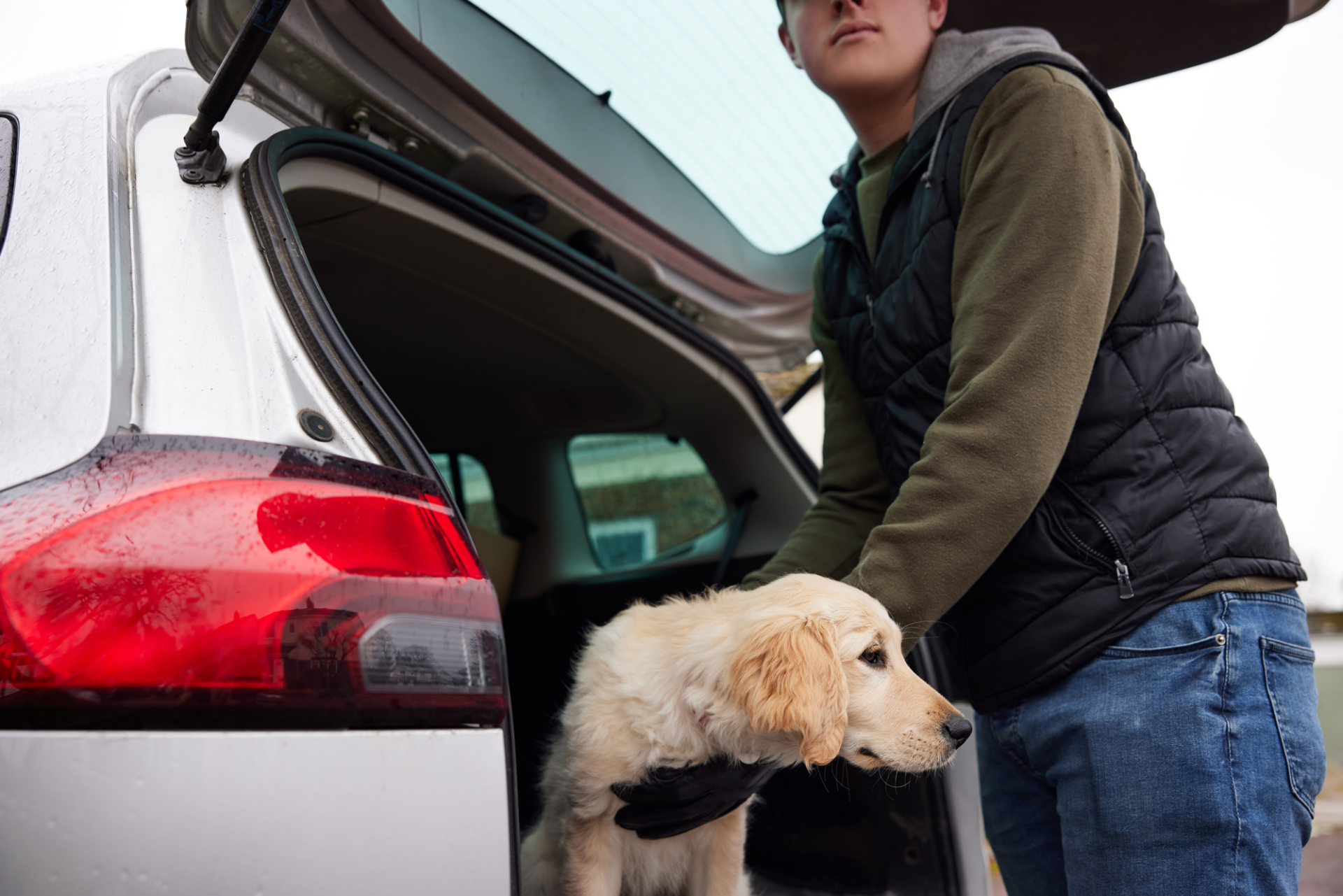
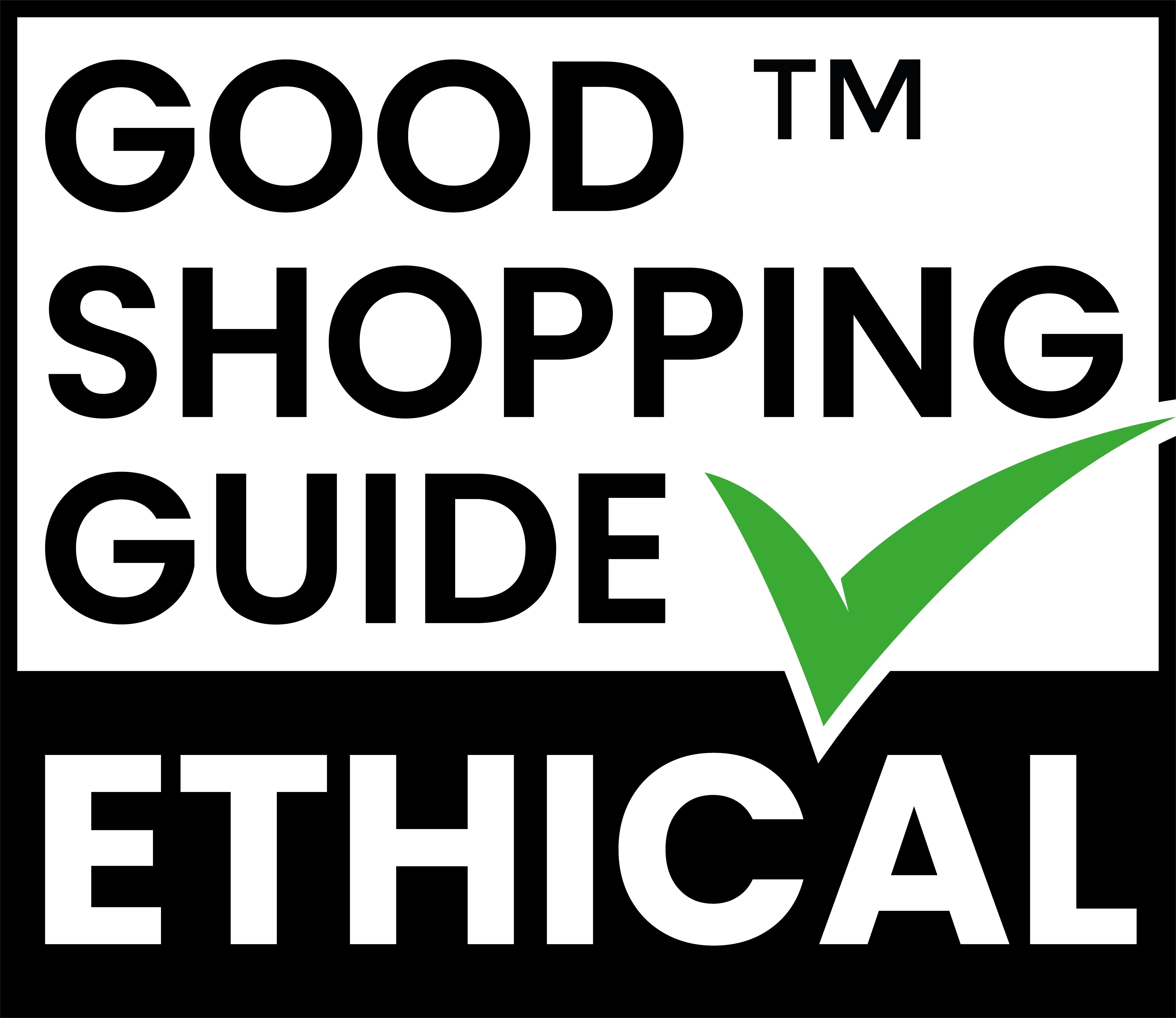
Add a comment